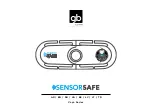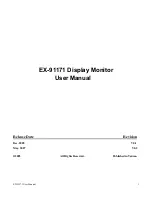
10
2.2 Anchoring accessory
For assembly, refer to the instructions specific to the type of sensor used.
3 INSTALLATION, USE AND DEINSTALLATION
3.1 Conditions prior to set-up and use
- Altitude: Up to 2000 m
- Relative humidity: Max 80%
- Degree of pollution assigned: 2
Before setting up and using the display unit, you must:
a) make sure that there is no stress value shown when the appliance is not subject to traction.
Should this occur, refer to Chapter 11 Operating Anomalies and Troubleshooting.
b) make sure that the sensor batteries and display unit power pack are adequately charged.
c) Make sure you have a good radiolink between the sensor or LLXt module and the display
unit.
d) Make sure, using the "ID" icon, that the serial number of the sensor on the label of the
sensor or LLXt module matches the serial number of the sensor indicated by the display unit
(see § 6.2.2 and § 6.2.3).
3.2 Installation, Use and Deinstallation
Refer to the documentation for the LLX2 or LLXh sensors.
If an LLXt module is used, refer to the manufacturerʼs documentation covering the associated load cell.
When installing you must:
a) make sure that the load line anchoring point(s) are sufficiently robust in relation to the
traction that will be applied.
b) make sure that the anchoring accessories at either end of the dynamometer are compatible,
and that they comply with the relevant regulations.
c) make sure that clevis pins are well locked, with the nut screwed down to the maximum, and
make sure that the hook safety latch is working correctly.
d) make sure that the sensor is correctly aligned in the traction line.
«
DANGER
»
GB
Summary of Contents for LLX2
Page 37: ......
Page 73: ......
Page 109: ......
Page 145: ......
Page 147: ...13 3 39 36 28 30 27 29 6 7 4 B 4ʼ 35 54 Chap 8 kN kg t Lbs ton daN nopsis chaltbild ...
















































